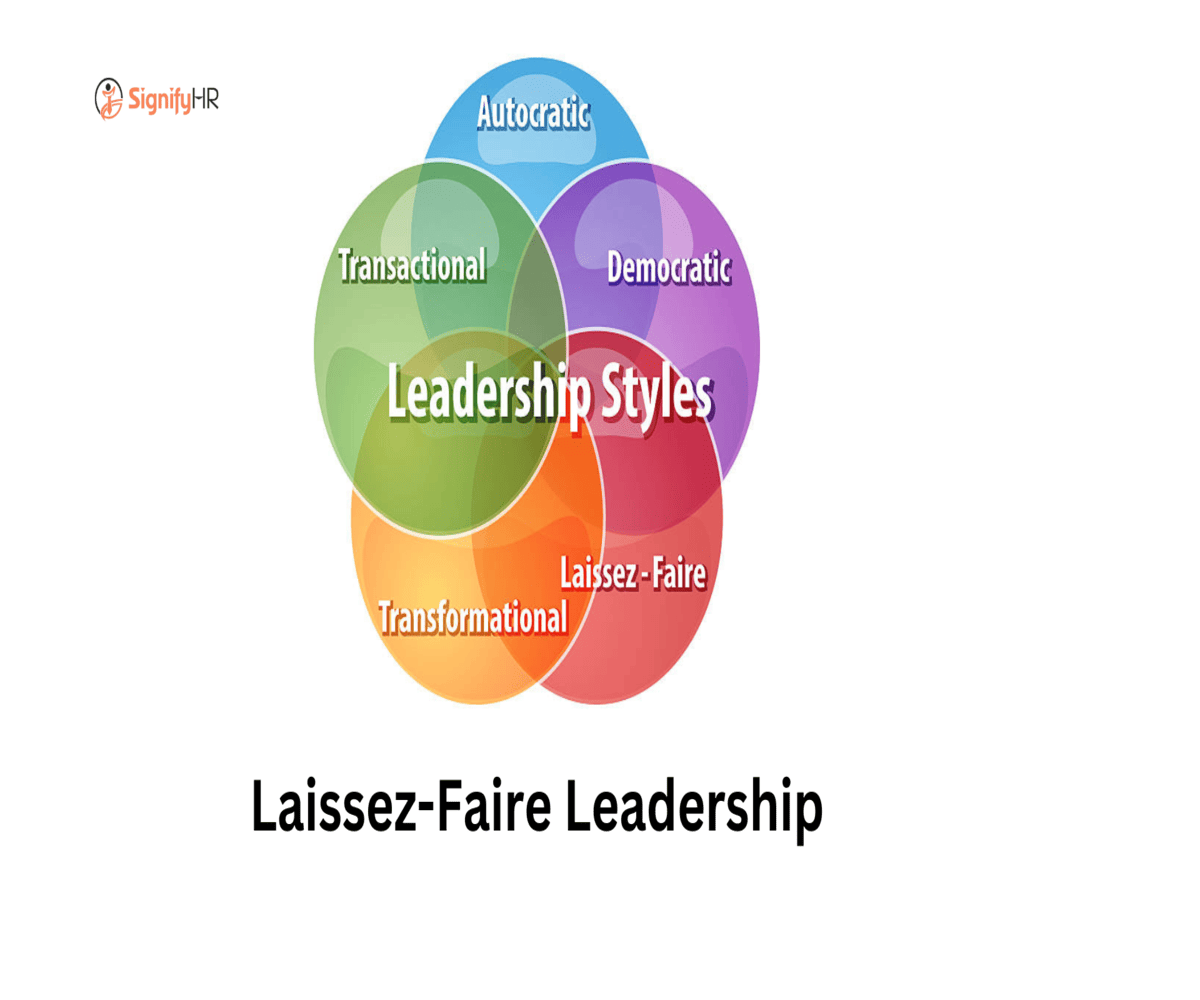Introduction to Laissez-Faire Leadership
Laissez-Faire leadership, also known as delegative leadership, is a management style where leaders provide minimal supervision and allow employees to make most decisions independently. This leadership approach fosters creativity, autonomy, and innovation but requires self-motivated employees to be effective.
Key Learning Objectives
- Understand the principles and characteristics of Laissez-Faire leadership.
- Explore the benefits and challenges of this leadership style.
- Analyze real-world examples of Laissez-Faire leaders and their impact.
- Learn how to implement Laissez-Faire leadership effectively in business settings.
- Compare Laissez-Faire leadership with other leadership styles.
1. Characteristics
a. Minimal Supervision
- Leaders take a hands-off approach, allowing employees to make decisions.
- Employees are expected to be self-motivated and competent.
b. High Level of Autonomy
- Employees have the freedom to set their own work schedules and goals.
- Encourages independent problem-solving and decision-making.
c. Trust-Based Leadership
- Leaders trust their team members to complete tasks effectively.
- Encourages responsibility and accountability among employees.
d. Flexible Work Environment
- Less rigid structure and fewer formal processes.
- Employees work in a relaxed yet result-oriented atmosphere.
Diagram: Structure of Laissez-Faire Leadership
CEO
|
----------------
| |
Manager A Manager B
| |
Employees Employees (Self-Managed)2. Benefits
a. Encourages Creativity and Innovation
- Employees have the freedom to explore new ideas.
- Supports experimentation and risk-taking.
b. Increases Employee Satisfaction
- Employees feel trusted and valued.
- Leads to higher job satisfaction and morale.
c. Enhances Efficiency in Skilled Teams
- Best suited for experienced, highly competent employees.
- Employees can focus on productivity without constant oversight.
d. Reduces Workplace Stress
- Less micromanagement results in a relaxed work environment.
- Employees can work at their own pace while meeting deadlines.
Diagram: Benefits of Laissez-Faire Leadership
+ Creativity & Innovation + Employee Satisfaction
+ Efficiency in Skilled Teams + Reduced Workplace Stress3. Challenges of Laissez-Faire Leadership
a. Risk of Low Productivity
- Employees lacking self-discipline may struggle without guidance.
- Can lead to missed deadlines and inefficiencies.
b. Lack of Direction
- Employees may feel lost without clear leadership.
- Requires highly skilled and motivated individuals to function well.
c. Communication Gaps
- Limited supervision can result in miscommunication.
- Leaders must ensure effective collaboration among employees.
d. Potential for Team Conflicts
- Lack of oversight may lead to disputes among team members.
- Leaders should intervene when necessary to maintain harmony.
4. Real-World Examples of Laissez-Faire Leaders
a. Warren Buffett (Berkshire Hathaway)
- Gives his executives full autonomy in decision-making.
- Encourages independent thinking and accountability.
b. Steve Jobs (Apple – Design Teams)
- Allowed creative teams to work independently.
- Encouraged innovation without excessive management.
c. Herbert Hoover (Former U.S. President)
- Relied on a hands-off approach to economic policies.
- Mixed success due to external economic challenges.
5. Implementing Laissez-Faire Leadership in Business
a. Hire Skilled and Self-Motivated Employees
- Best suited for professionals with expertise and experience.
- Ensures team members can work independently.
b. Set Clear Expectations and Goals
- Provide direction without micromanaging.
- Establish performance benchmarks for accountability.
c. Provide Resources and Support When Needed
- Ensure employees have access to necessary tools and information.
- Offer guidance when requested, without imposing control.
d. Encourage Open Communication
- Promote collaboration while maintaining individual independence.
- Use meetings and check-ins to align team goals.
Diagram: Steps to Implement Laissez-Faire Leadership
1. Hire Skilled Employees → 2. Set Clear Goals → 3. Provide Resources → 4. Encourage Communication6. Comparison with Other Leadership Styles
| Leadership Style | Focus | Employee Involvement | Best Used In |
|---|---|---|---|
| Laissez-Faire | Autonomy & Freedom | Very High | R&D, Creative Industries, Tech Startups |
| Transactional | Performance & Rewards | Low | Large Corporations, Military, Manufacturing |
| Transformational | Vision & Innovation | High | Startups, Creative Fields, Education |
Conclusion
Laissez-Faire leadership is a highly effective style in environments where employees are self-motivated and skilled. By promoting autonomy, trust, and creativity, it fosters innovation and job satisfaction. However, it requires careful implementation to avoid productivity and communication challenges.
For more expert insights on leadership strategies, management principles, and career development, explore SignifyHR’s learning resources today!
Lead with trust, empower innovation, and drive success!




